x


Given the diverse range of Indian skin tones, understanding how to prep your face can get tricky. Whether you're aiming for a natural or full-glam look, aligning your skincare and makeup products with your skin’s tone and undertone will ensure a natural-looking finish.
Go through this guide to find the right makeup prep, focusing on primers, and base makeup tailored to your unique skin tone and undertone.
Skin tone refers to the surface color of your skin. Understanding your skin tone helps you choose the right foundation, concealer, and contour products—ensuring a seamless, natural finish for your makeup. These base products are key to achieving a cohesive look that highlights your features authentically.
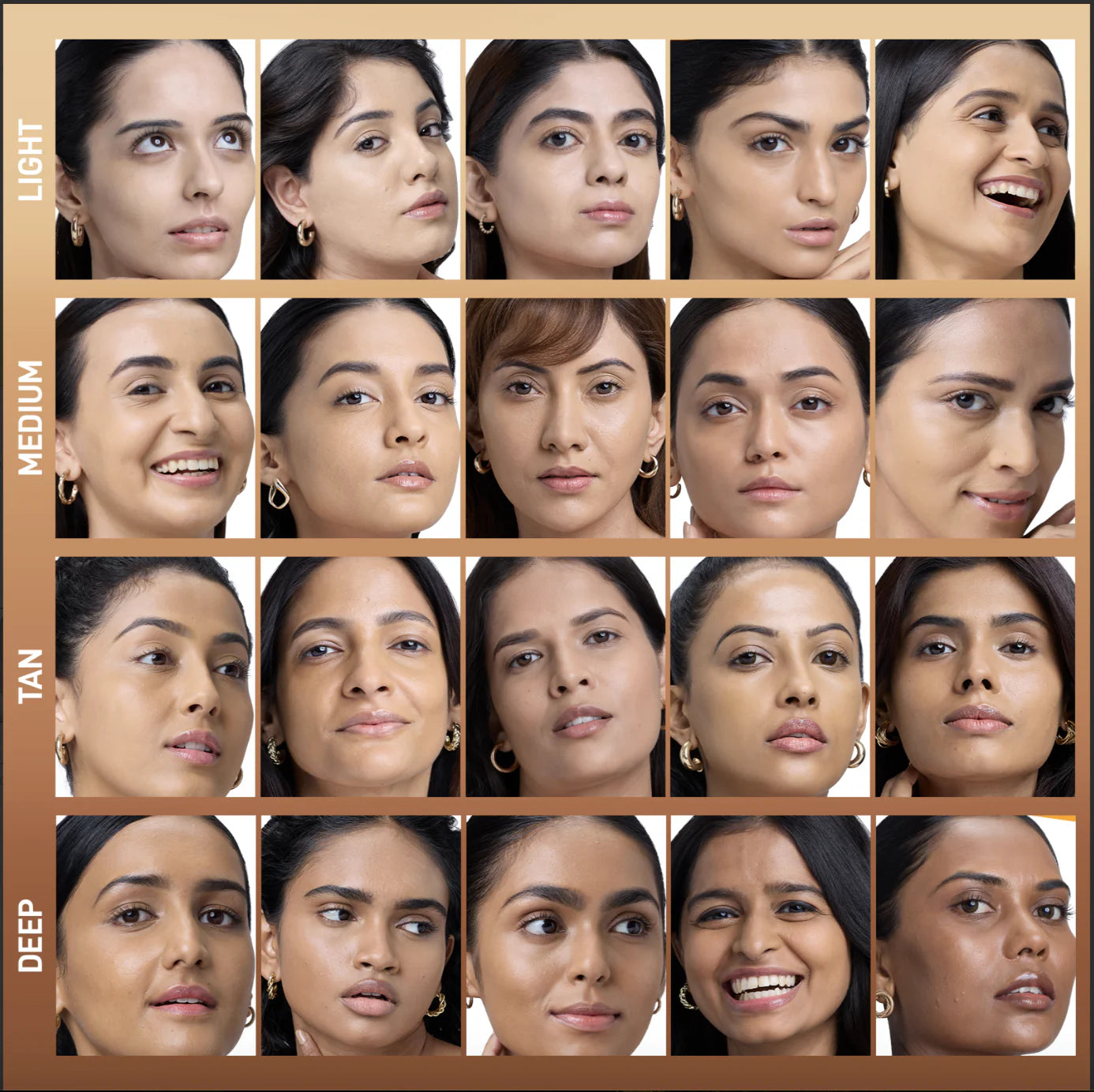
You can determine your skin tone by observing the natural color of your skin in well-lit conditions, such as daylight or under a white light. Focus on areas like your jawline and neck, which usually are closer to your true tone.
An undertone is the subtle hue beneath your skin's surface, which affects how colors on your skin appear in different lighting. Indian undertones are more constant than surface skin tones and are categorized into Warm, Cool, and Neutral.
Warm: Yellow, golden, or peachy hue.
Cool : Pink, red, or bluish tinge.
Neutral: A balanced mix that doesn't show clear hints of warm or cool.
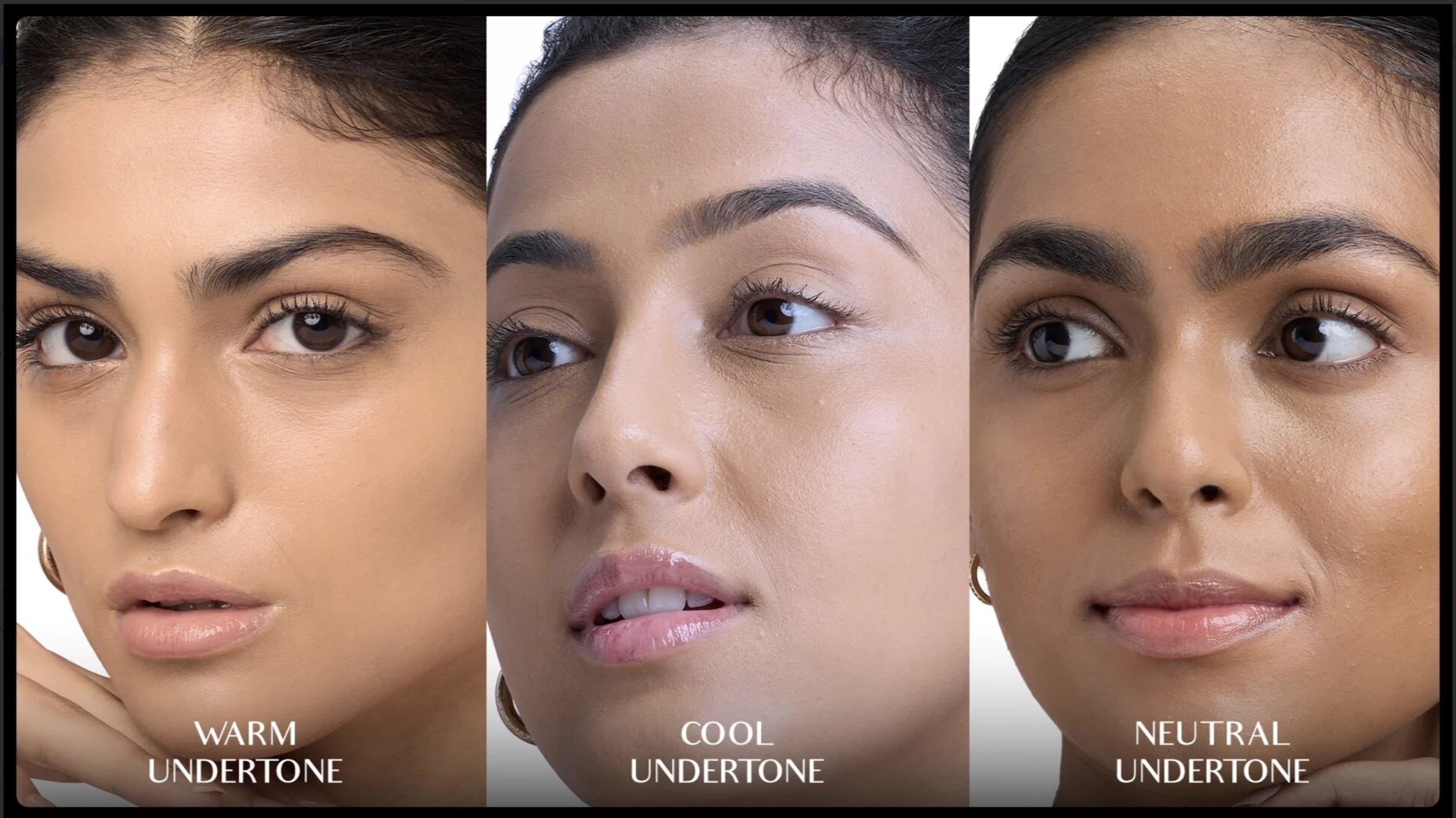
Understanding your undertone ensures that makeup enhances your natural glow. Since undertones affect how your skin reflects light, choosing the right base makeup and colored makeup, that complement your undertone is essential. This ensures makeup looks luminous and natural under different lighting.
Here are a few methods to understand your undertone:
Vein Color Test: Observe your veins under natural light. If they appear green, you likely have warm undertones. If they seem blue or purple, you might have cool undertones. A mix suggests neutral undertones.
Jewelry Test: Determine which metal suits you best. Gold complements warm undertones while silver flatters cool tones. If both look good, your undertone is probably neutral.
Sun Reaction: Consider how your skin reacts to the sun. If you tan easily, your undertone may be warm. If you burn, it’s likely cool.
If you’re not sure about finding your skin tone and undertone, ask LUMI to help.
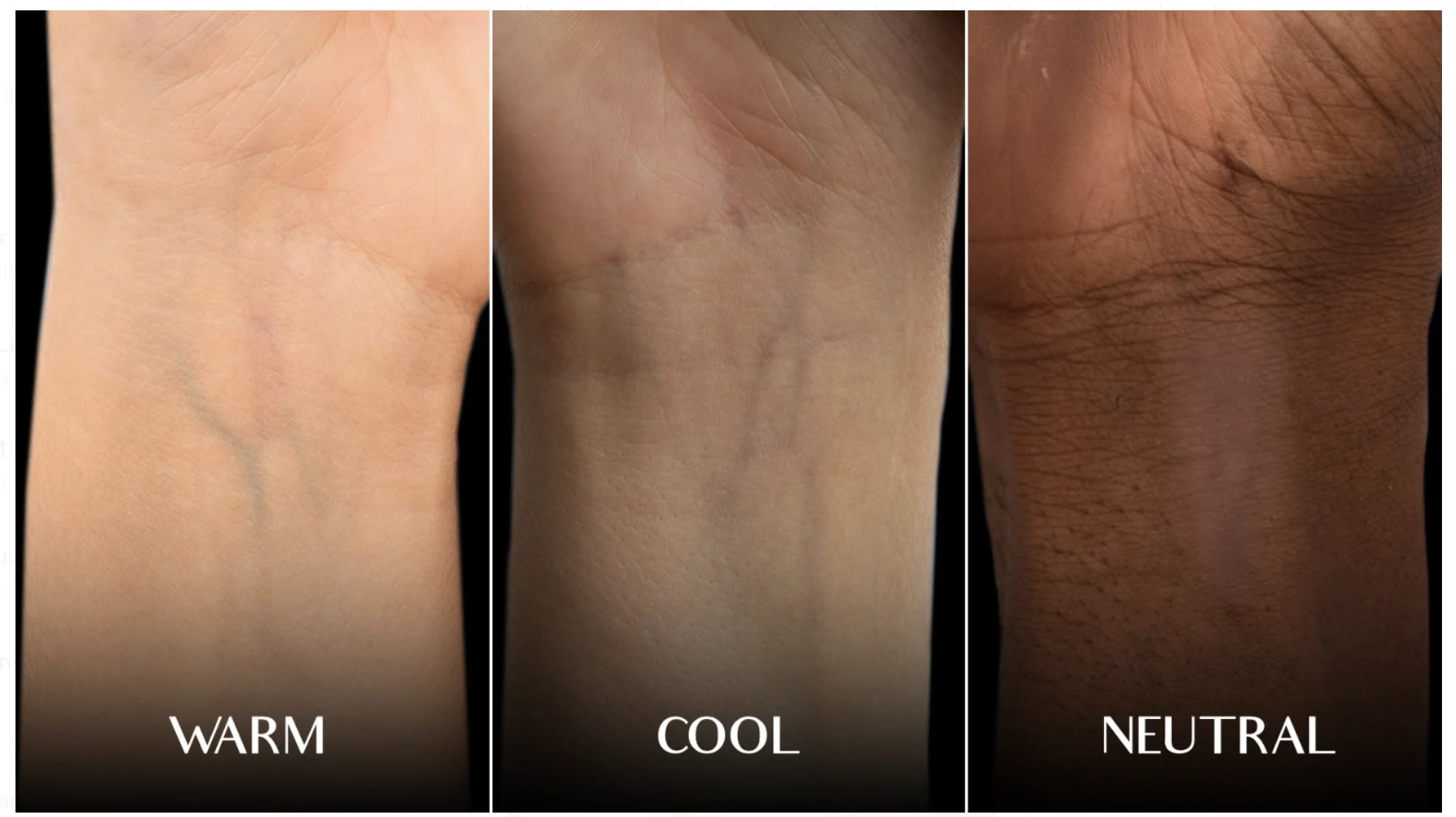
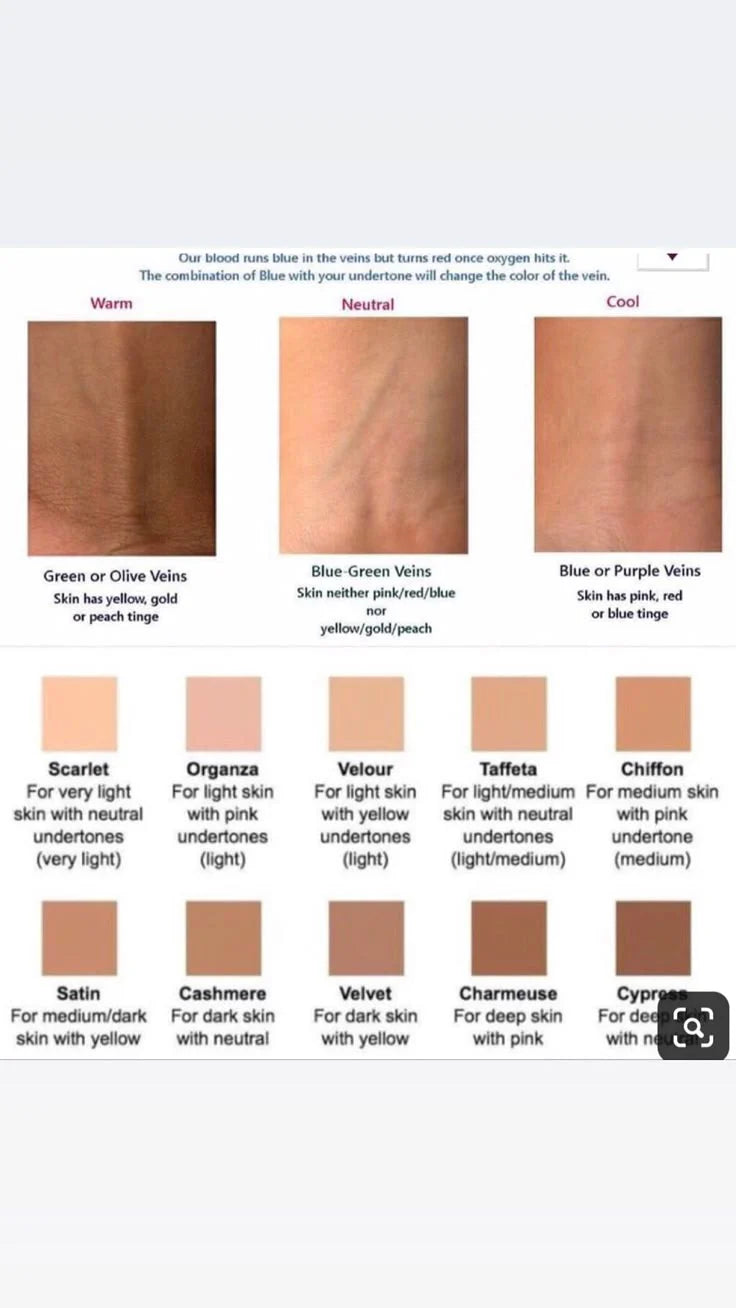
Now that you have a better understanding of your skin tone and undertone, let's delve into selecting the ideal primer and base makeup. This guide is tailored for Indian skin tones and offers expert recommendations on shades that perfectly complement each category.
Start off with a good face prep by using a primer to create a smooth canvas for your makeup. This helps extend the longevity of your makeup while offering additional benefits like hydration, oil control, or a luminous glow. To reap the most benefits, it's essential to choose a primer that suits your skin type.
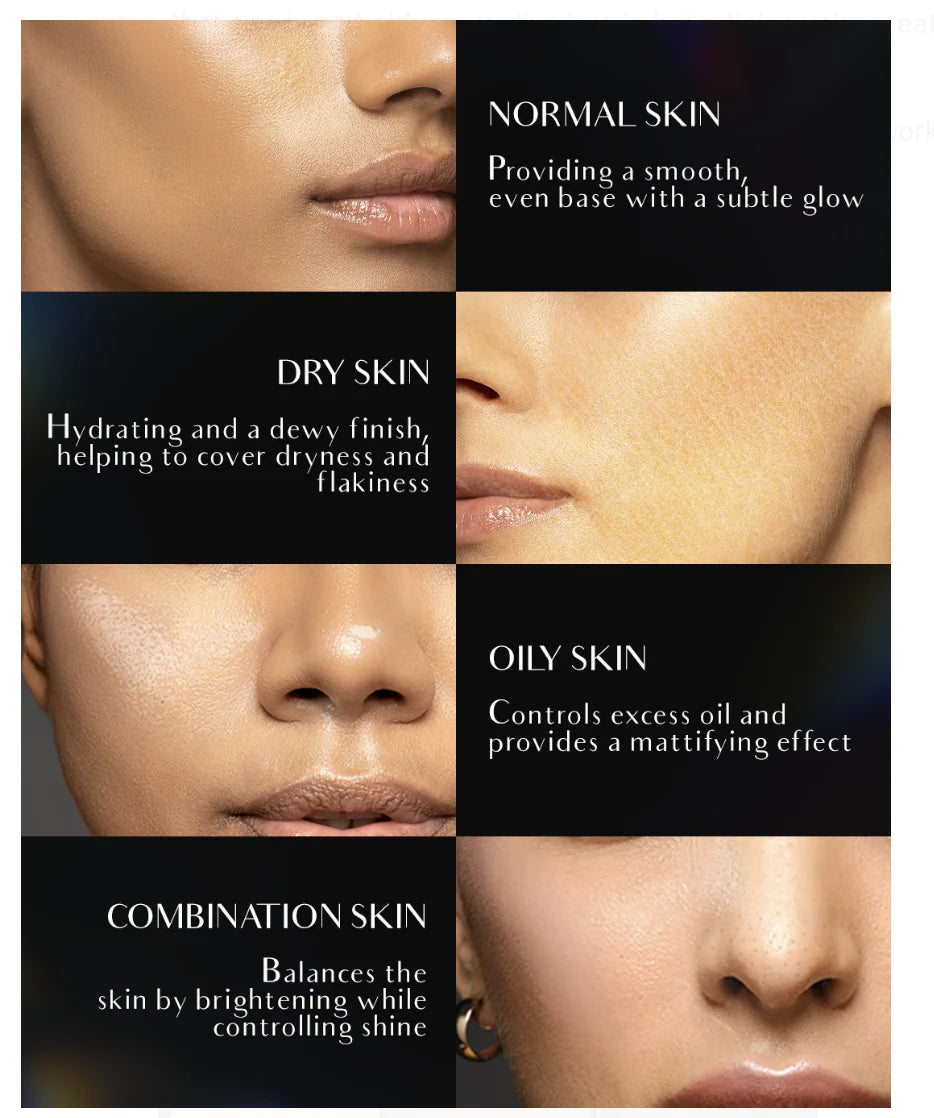
2. Base Makeup
Base makeup prep refers to the initial layer of makeup that creates a smooth, even canvas for your entire look. This typically consists of three essential products:.
Foundation: Evens out your skin tone and provides sheer to medium coverage.
Concealer: Covers blemishes, dark circles, and other imperfections.
Contour: Defines facial features by adding depth and dimension.
a.Finding your Foundation
Finding the perfect foundation match for your skin tone and undertone is the key to achieving a flawless, natural-looking base. It blends seamlessly into your skin, ideal for achieving the effortless 'clean girl' makeup look that highlights your natural radiance.
If finding your perfect foundation match doesn’t feel like your cup of tea, let LUMI help you.
b.Concealer
Choosing the right concealer shade is important to achieving a natural-looking finish. A concealer that compliments your skin tone and undertone will seamlessly blend into your skin, effectively covering blemishes, pigmentation, and other imperfections.
c. Contour
Choosing the right contour shade is crucial to defining your facial features. Contouring is a technique that creates the illusion of depth and dimension, making your face appear slimmer, more defined, and radiant. The key to successful contouring lies in selecting a contour shade that complements your skin tone and undertone.
d. Compact
A compact powder is a versatile makeup tool that helps set your base, reduces shine, and adds a smooth finish to your skin. It also keeps your makeup last long. However, to reap these benefits, it's crucial to choose a setting product that matches the finish you want to achieve.
A well-matched compact powder will enhance your natural complexion by blending into your skin, creating a natural-looking matte finish. It will also prevent your makeup from looking cakey and ashy by not settling into fine lines, wrinkles, and pores.
FAQs
Q:1 What is the basis of skin tone?
A. The basis of skin tone is melanin, a pigment produced by cells in the skin. There are two types of melanin: eumelanin (brown/black) and pheomelanin (red/yellow). The amount and ratio of these melanin types determine an individual's skin tone.
Q:2 How can I check my skin tone?
A. You can determine your skin tone by observing the natural color of your skin in well-lit conditions, such as daylight or under a white light. Focus on areas like your jawline and neck, which usually are closer to your true tone.
Q:3 What is Indian skin tone
A. Indian skin tone is diverse and ranges from light to deep, with varying undertones. Generally, Indian skin tones can be categorized as follows:
1. Light skin tone: Fair with golden or pink undertones
2. Medium skin tone: Golden or honey-toned with warm undertones
3. Deep skin tone: Rich, dark brown with cool undertones.
You can also explore the right face prep for your skin concerns.